One of the most interesting truffles I've had, as well as the cheapest to date. Oregon black truffles (Leucangium cascadiense, formerly Leucangium carthusianum) aren't as well known as their European counterparts in the genus Tuber, but they're still worth trying. Like any truffle, working with them is a learning curve. They have a distinct, fruity green apple flavor as well as other characteristics different from any truffle I've had.
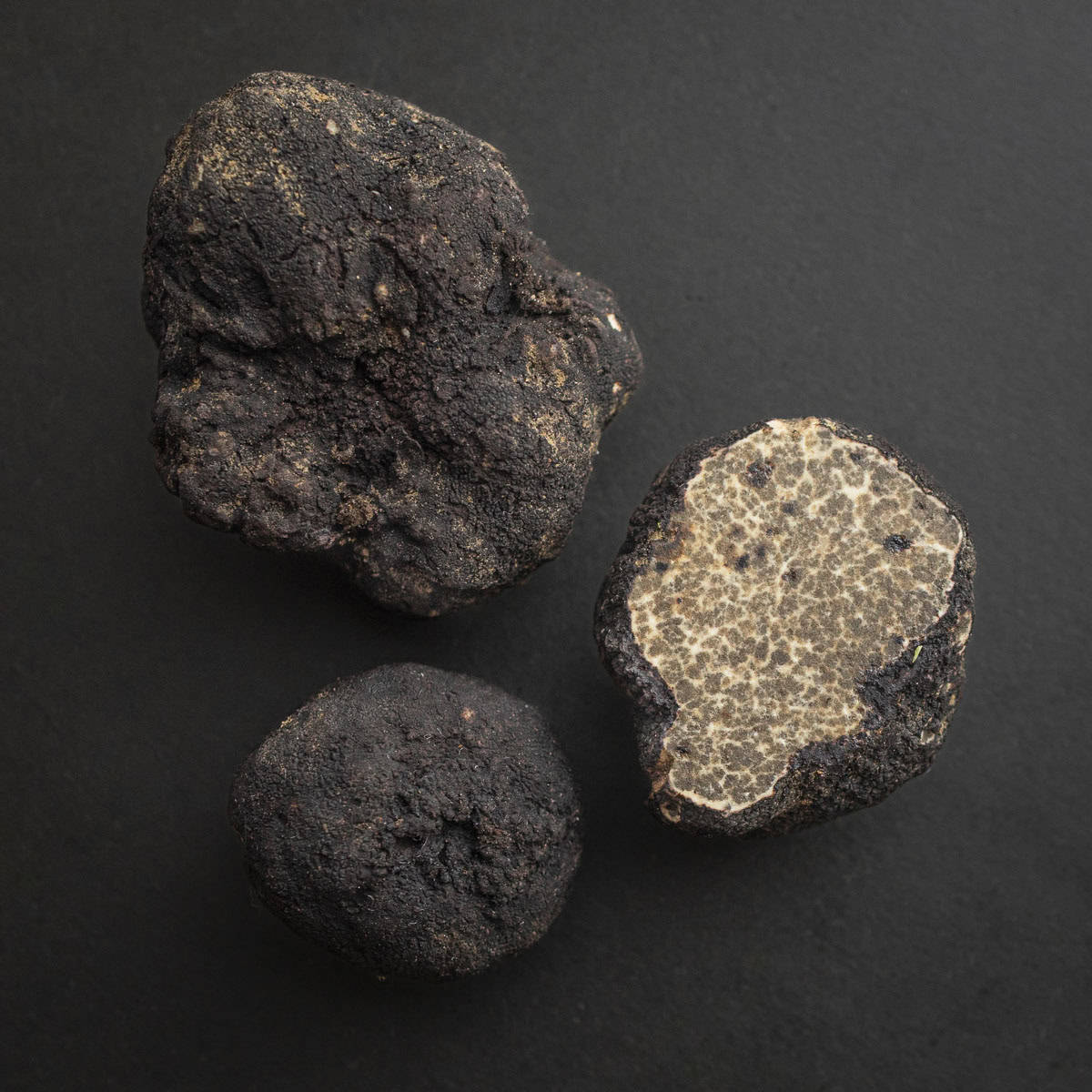
Background
Leucangium carthusianum is an indigenous to the Pacific Northwest that grows with douglas fir trees, and a range from around Northern California to British Colombia. The typical season will run from around December through April.
Like other truffles they're an Ascomycete, but are placed in the morel family (Morchellaceae) making them more closely related to Blue Ridge Truffles (Imaia gigantea) than the other, more well known winter black truffles like T. brumale or T. melanosporum.
The black peridium (outer edge) is a bit crumbly and you'll want to be gentle with them. The inner gleba has an attractive, creamy marbling, but it's not as finely detailed as European black truffles.
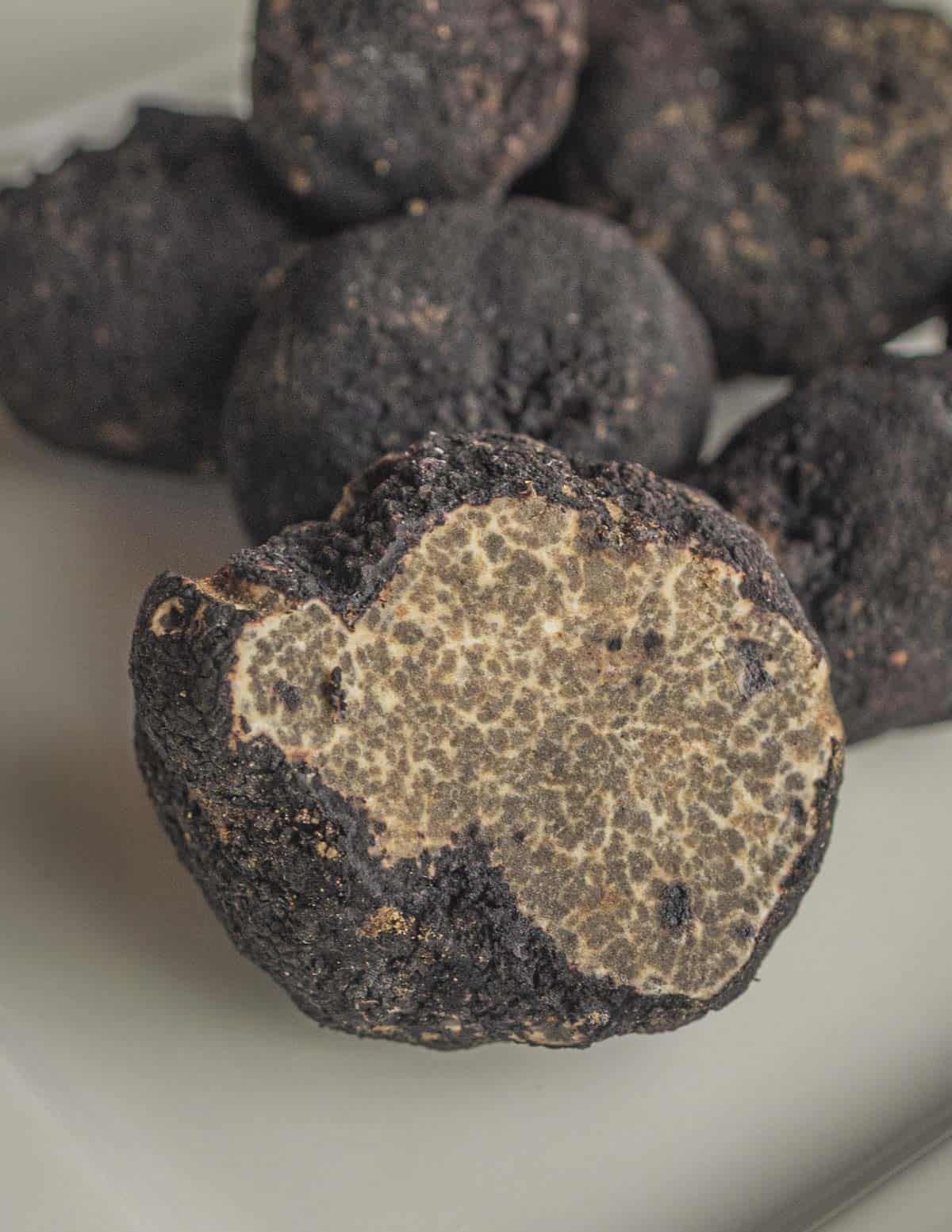
Special thanks to my friend Alana Mcgee at Truffle Dog Co. for sending these over to me. She and my friends over at Wild Goods are the two best purveyors I know of indigenous North American Truffles.
The current price is around $350 / lb, making them the cheapest truffle I've had to date. The lower price is indicative of the quality compared to more expensive truffles, but that's a bit like comparing different types of chocolate-I'm still going to eat them all. I did notice a higher amount of bug damage and tunneling than I've seen with European truffles, but nothing outlandish, especially considering the relatively low price.
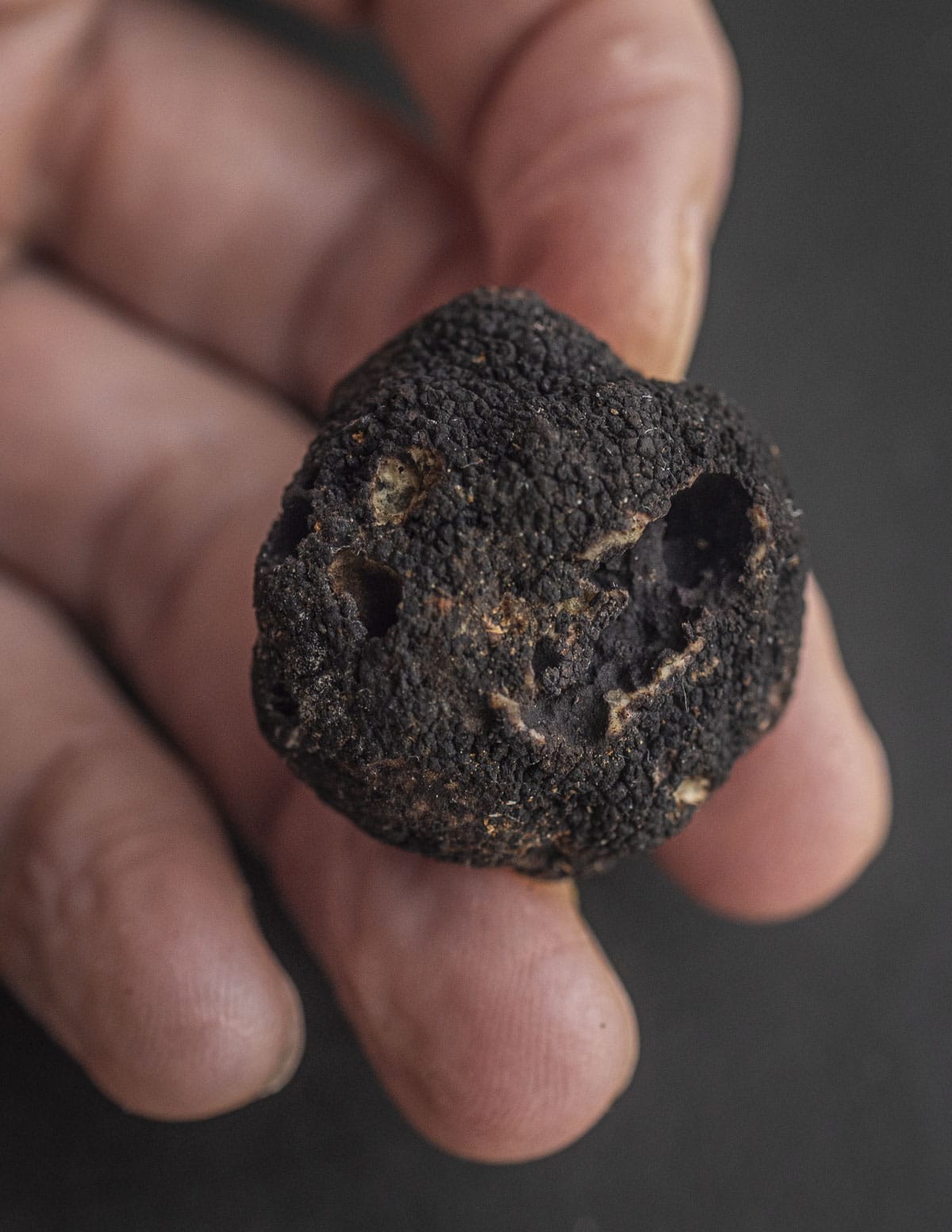
Flavor and Aroma
The first thing I noticed after opening the vacuum bag was a strong aroma of ammonia or past-prime brie cheese. Oregon white truffles (Tuber oregonense) I've eaten have a similar aroma when being unpacked.

After airing out and breathing for a day the aroma changes and takes on curiously herbal, fruity note that smelled a bit like green apple to me. If you're looking for a classic truffle aroma it's not really here, but that's not necessarily a bad thing.
Storage
One thing I knew to expect beforehand was that Oregon black truffles have a relatively short shelf life-even more so than other truffles. While I can usually get a week or so from other fresh truffles, I'd say 3-5 days after receiving Oregon black truffles is probably the peak window for use.
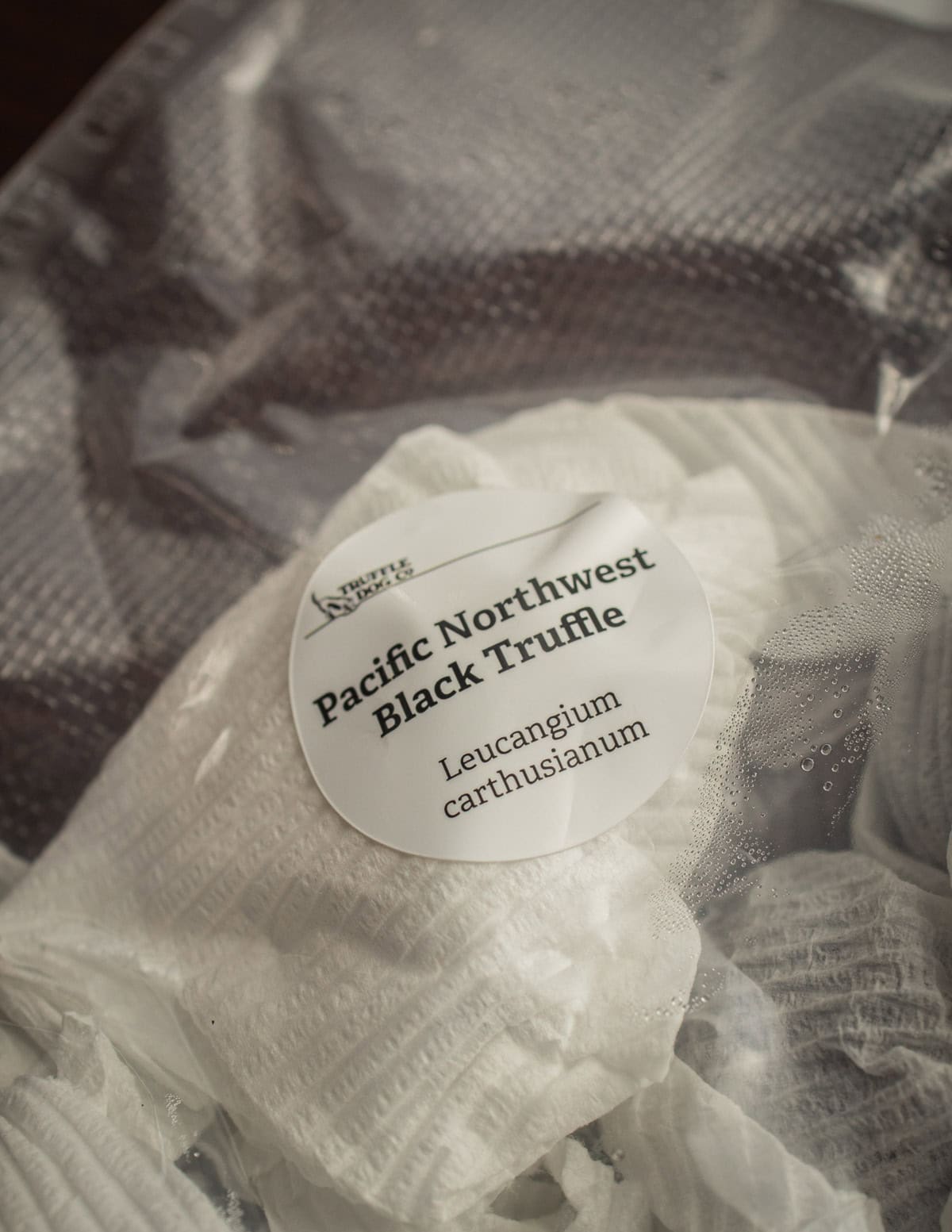
Note that shelf life here refers strictly to the aroma, and the fruiting bodies themselves may last much longer, they just won't taste like much and won't have enough fragrance to make infusions, etc.
Another very important thing to know is that these truffles are heavy, and wet. The truffles Alana sent had been cleaned and washed as I would expect, but the amount of water these truffles contain in general is very noticeable.
Where other truffles can be firm as rocks, these can be a bit squishy, and they contain so much liquid I could squeeze out drops of them if I tried. See the image below.
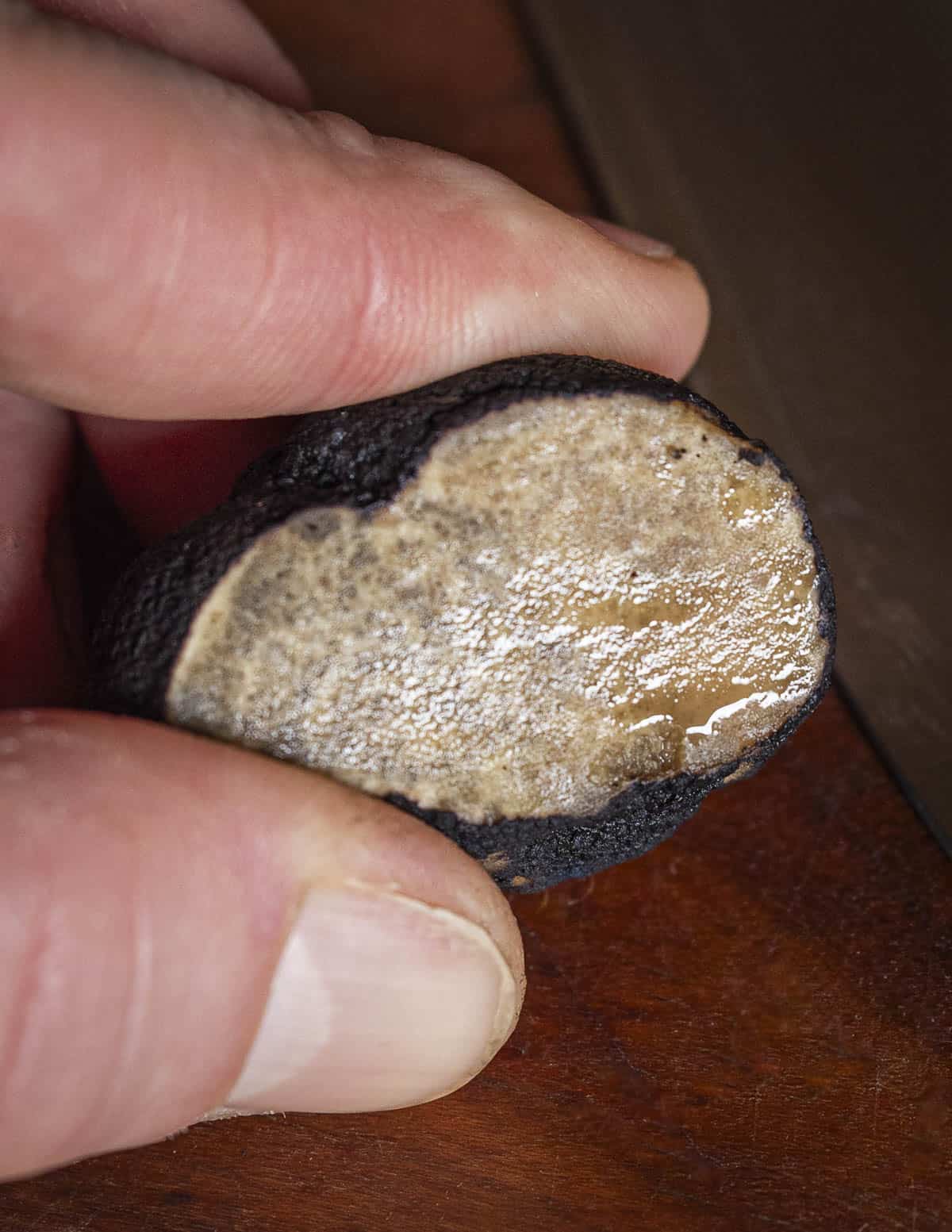
If follows from there that Oregon black truffles will be more prone to mold than other truffles and the paper towels they're stored with must be changed daily as they will be noticeably wet each morning.
General Cooking Recipes
Alana had some great starting points for how to use them in the kitchen and I tried to taste as many of them as I could. They can be used in savory preparations like your classic truffle pasta or risotto (added at the very end of course), but their fruity, savory aroma was particularly good in raw, cold preparations with smoked fish and oysters.
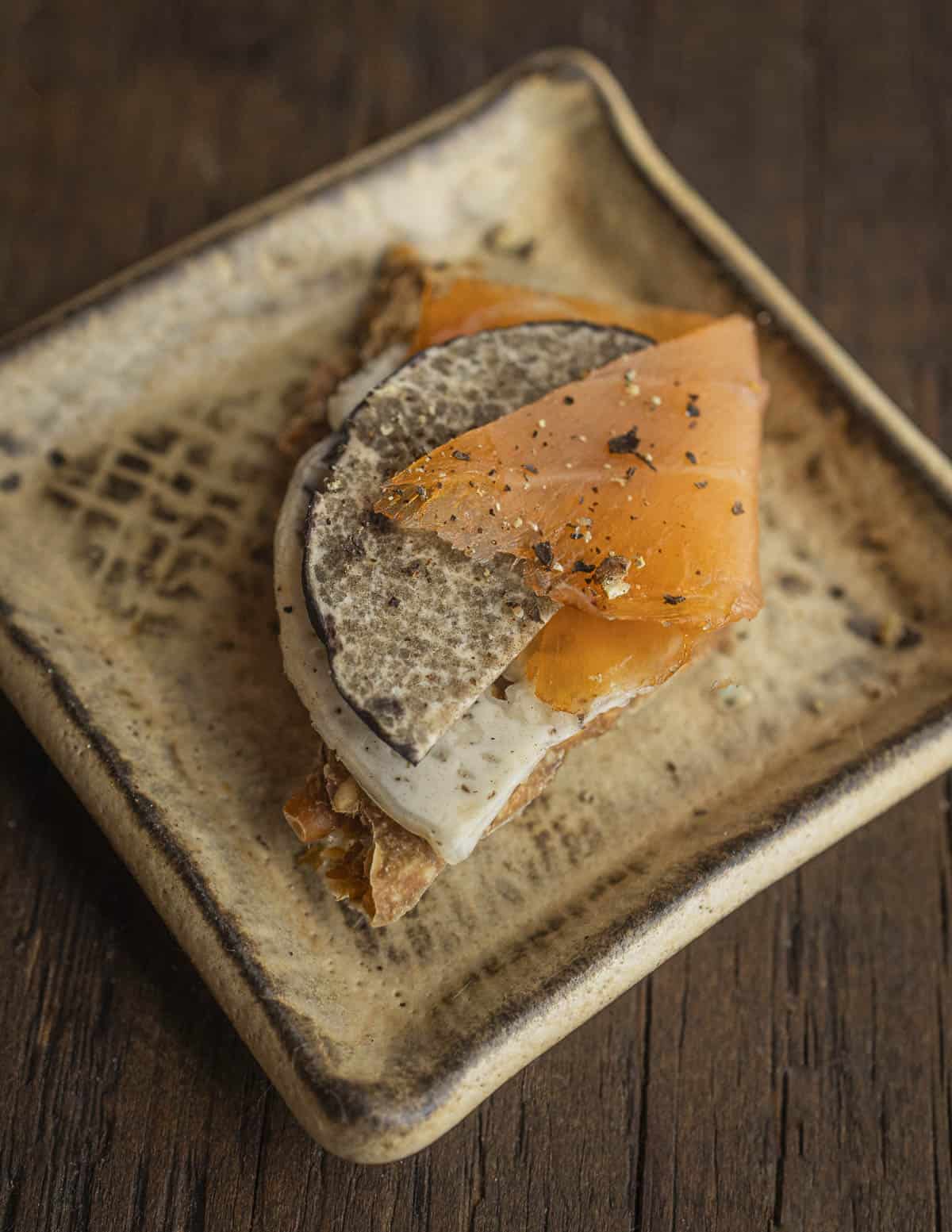

Another thing Alana mentioned was something I'd been meaning to make with fresh truffles for a while: truffle pesto.
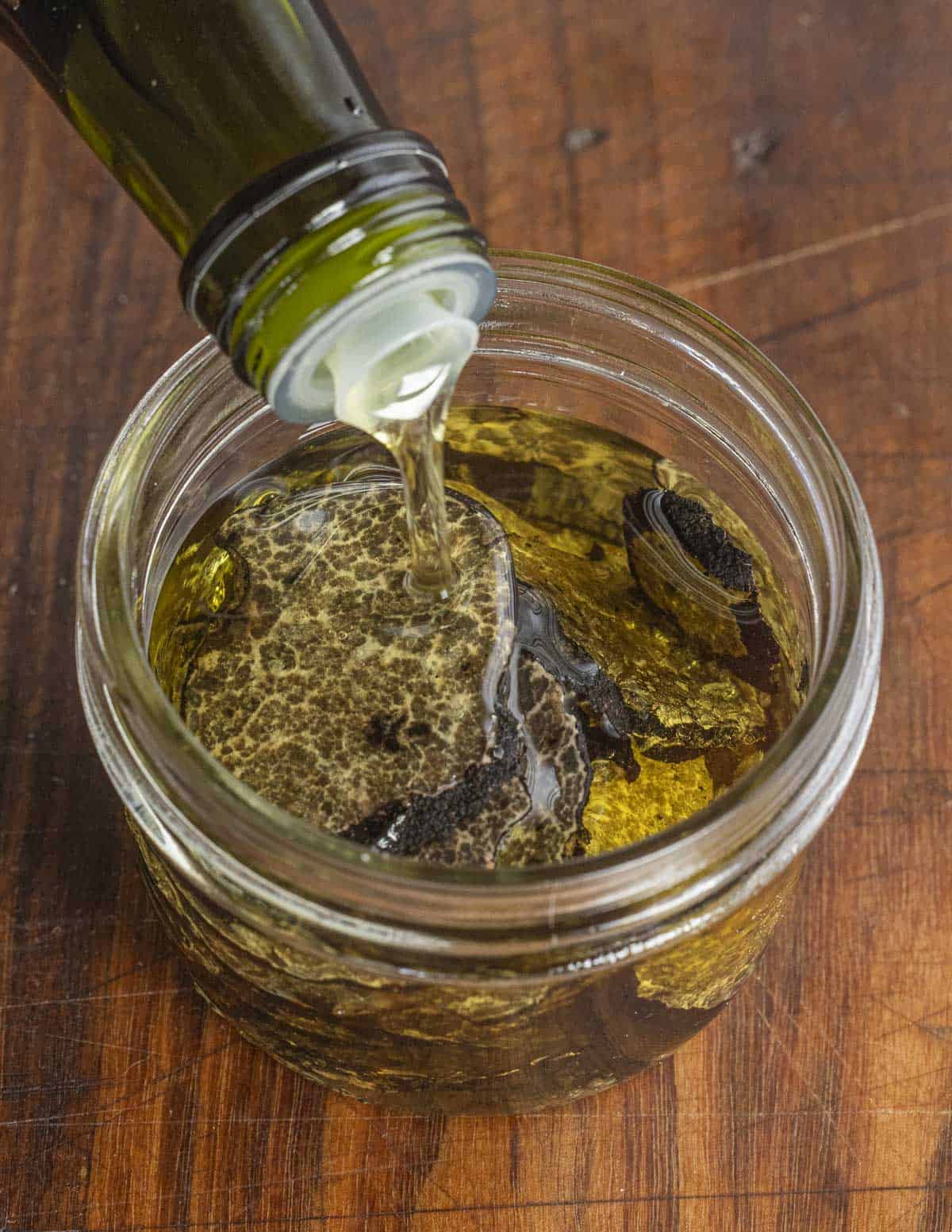
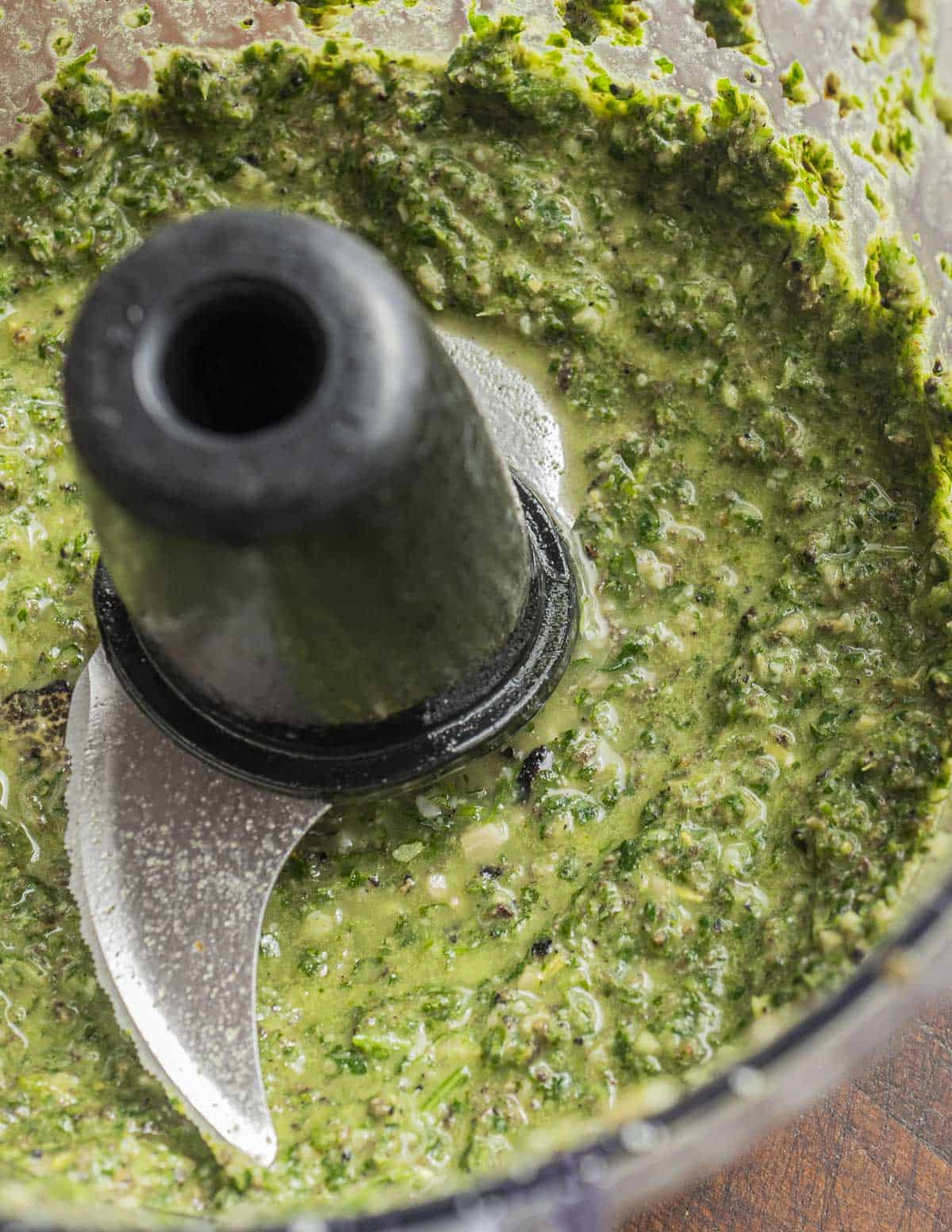
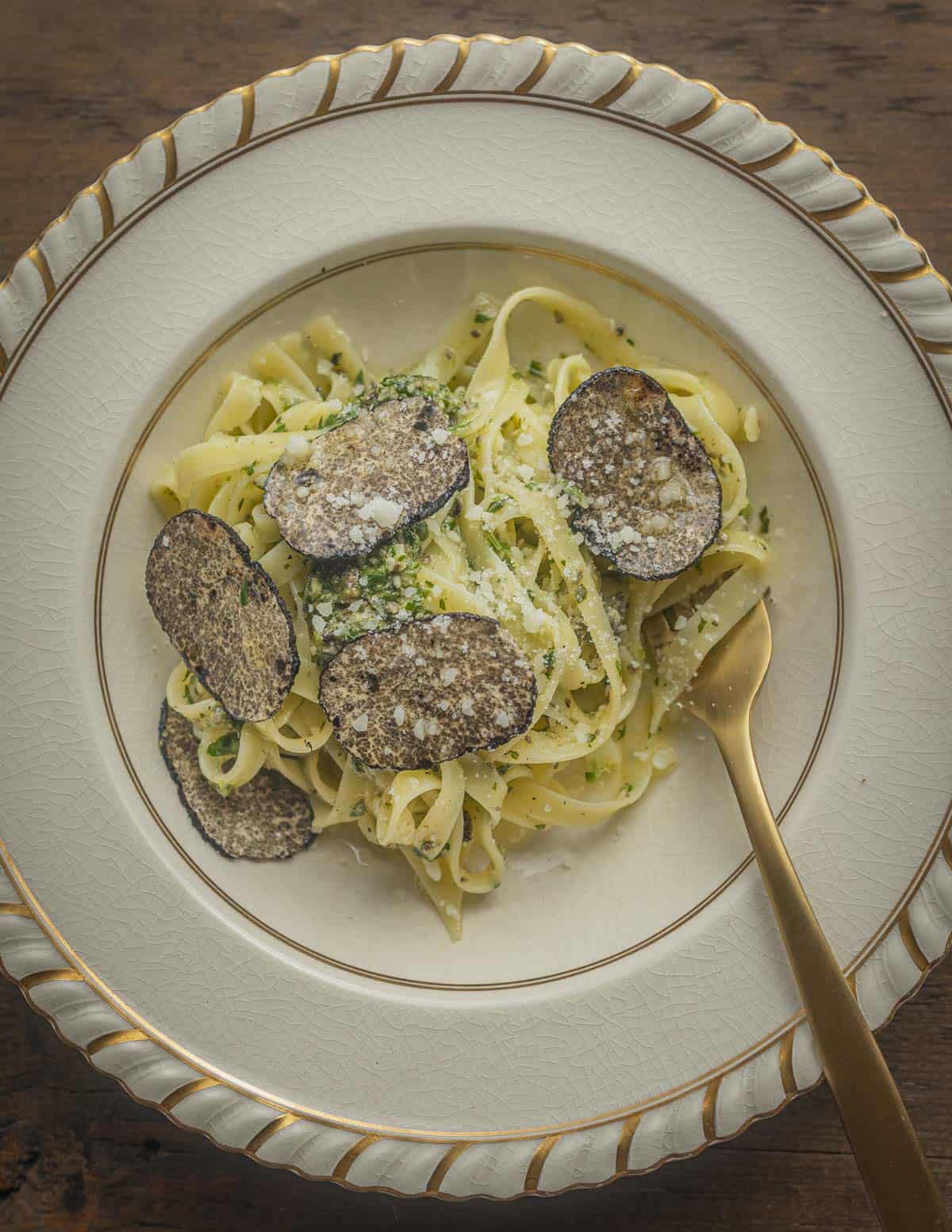
I used a basic recipe for a small batch of pesto, adding sliced truffles I'd soaked in the oil to make the pesto the day beforehand. The pesto was good, but my favorite way to preserve them for the short term is probably truffle carpaccio slices in oil.
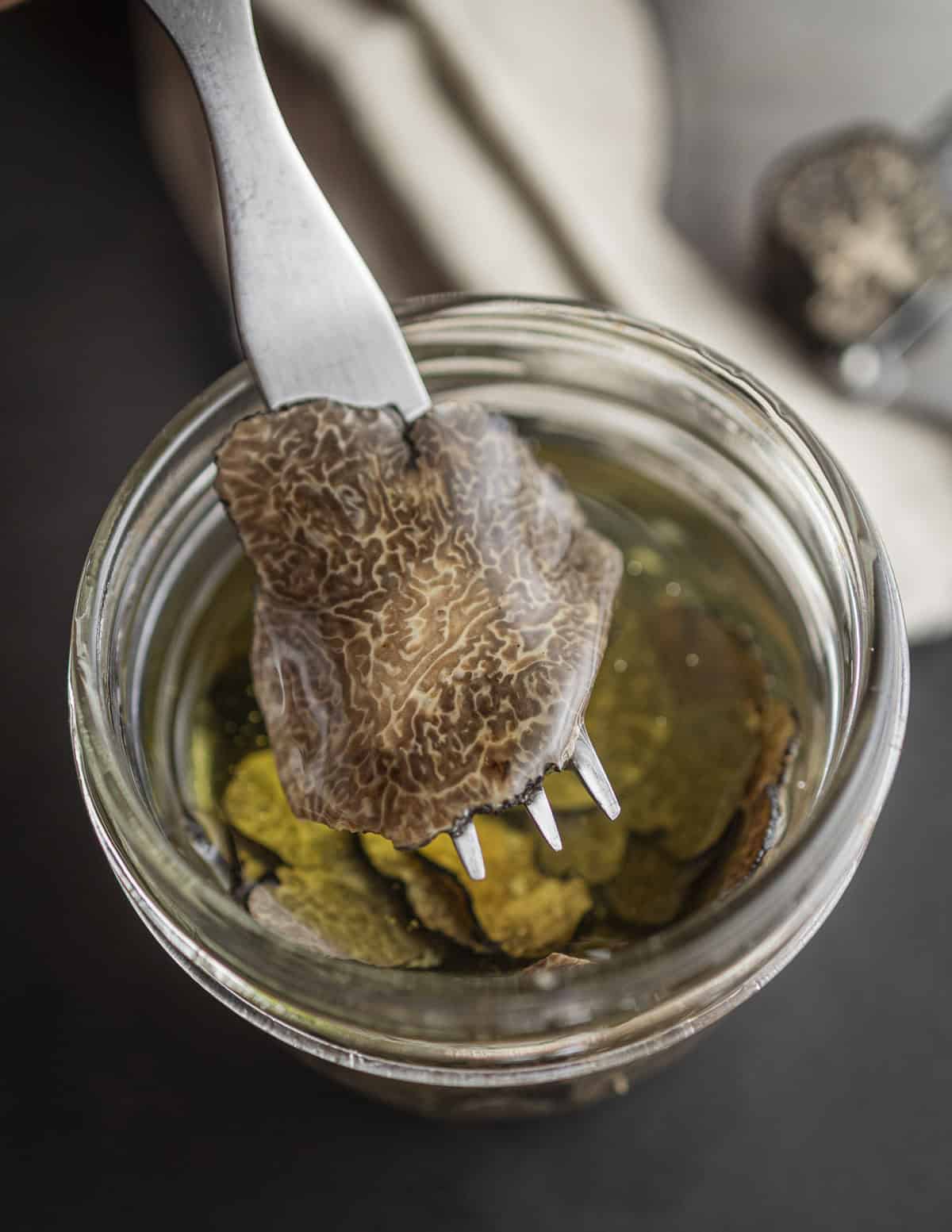
If you're able to get some, besides the cold preparations with smoked fish and oysters, you must try shaving a bunch of them (or any truffle) over a plate of piping hot fried pierogi. I'm planning to serve those at a few dinners this year.
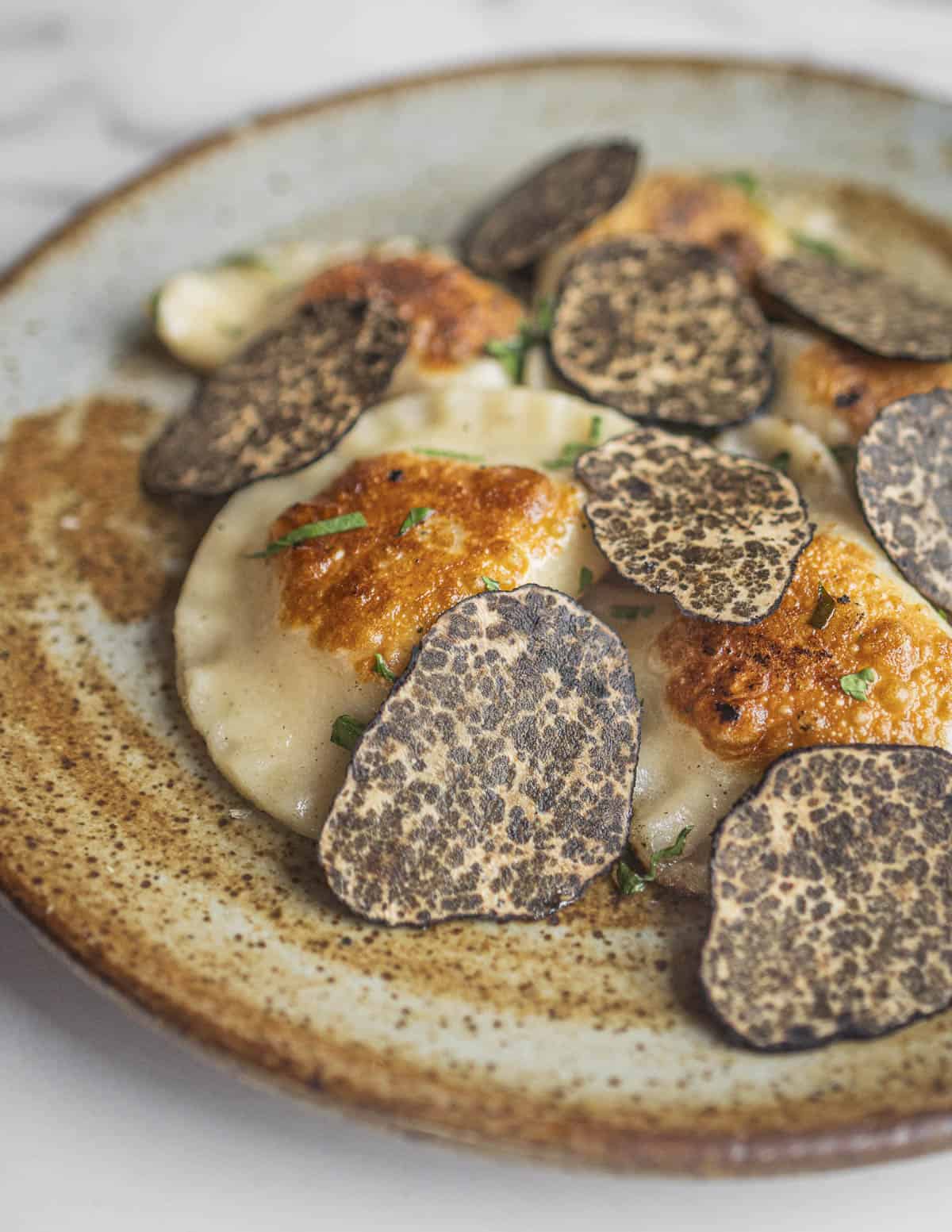
As the truffles contain more moisture than others, I found myself cutting them into larger pieces and using them in larger amounts get the most from.
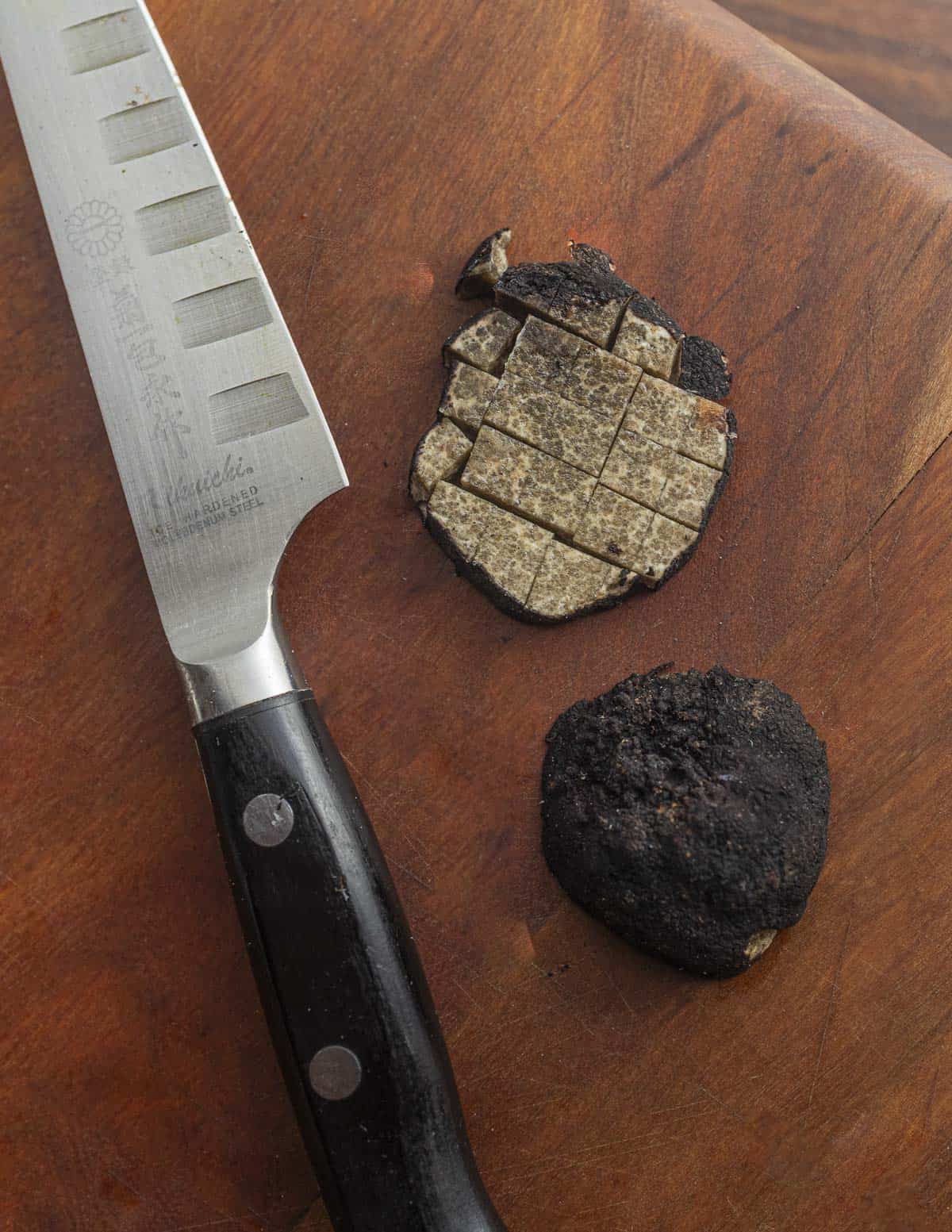
Where with say, Tuber melanosporum I'd recommend using half an ounce per serving for something like pasta or risotto, with Oregon truffles I'd go up to a full ounce or more for maximum effect. That said, a thick slice on an oyster or with a slice of smoked salmon was excellent even though it uses a smaller amount.
A great appetizer or side dish I had few times was a small bowl of mashed potatoes with a thick slice of truffle butter and diced truffles.
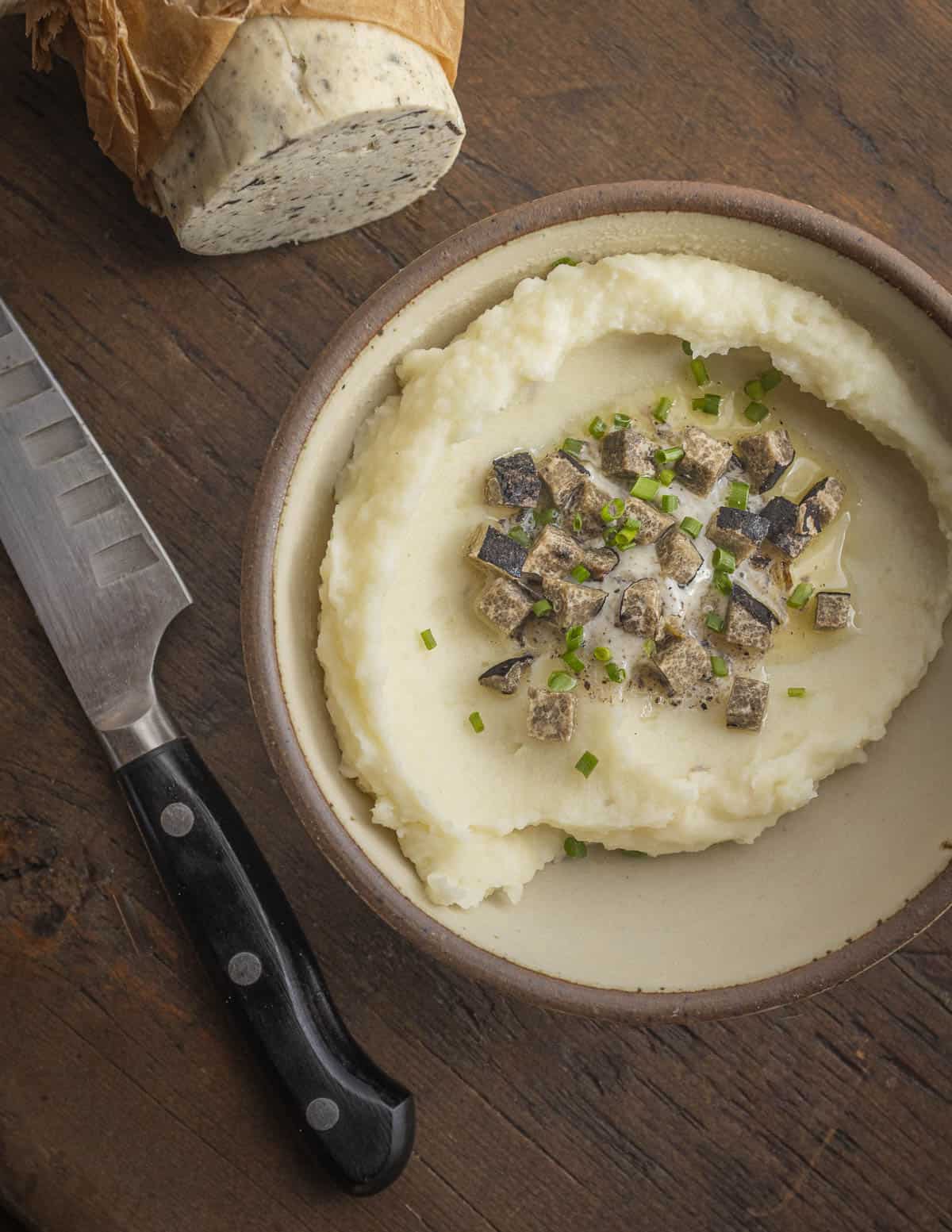
In closing, these are fun truffles for the enthusiast, but if you want a more potent experience I'd recommend starting with T. brumale or b-grade T. melanosporum first. They may cost twice as much, but the flavor's commensurate with the price.

Leah Priest
I made truffle oil from the recipe on this website. You say that the oil will keep for months in the fridge. Am I supposed to leave the truffles in the oil or remove them when the oil is ready to use?
Alan Bergo
Hi Leah, personal preference will come into play there a bit, but I typically take them out with a slotted spoon a week or two after putting it up. I’ll make a note to make sure that’s clear on the recipe. Thx!
Ben
Thanks for the culinary recommendations! I live in the PNW, and I'm training my dog to find truffles through the Truffle Dog Co. The instructors are fantastic, and after just a couple months, we're already in the woods training with real truffles (still a ways to go before I think he'll reliably work a forest). I stumbled into this post (crazy timing!) because I have a couple Oregon black truffles from a recent field session and not sure what to make with them. They are NOT the same as European black truffles and I agree they're very fruity. They smell almost like ripe pineapple to me. I was thinking of trying them on Beecher's mac and cheese (homemade). Beecher's flagship has a fruity element to it that I think will be a good match. I hear they're excellent with cream desserts too.
Alan Bergo
Thanks for commenting Ben.